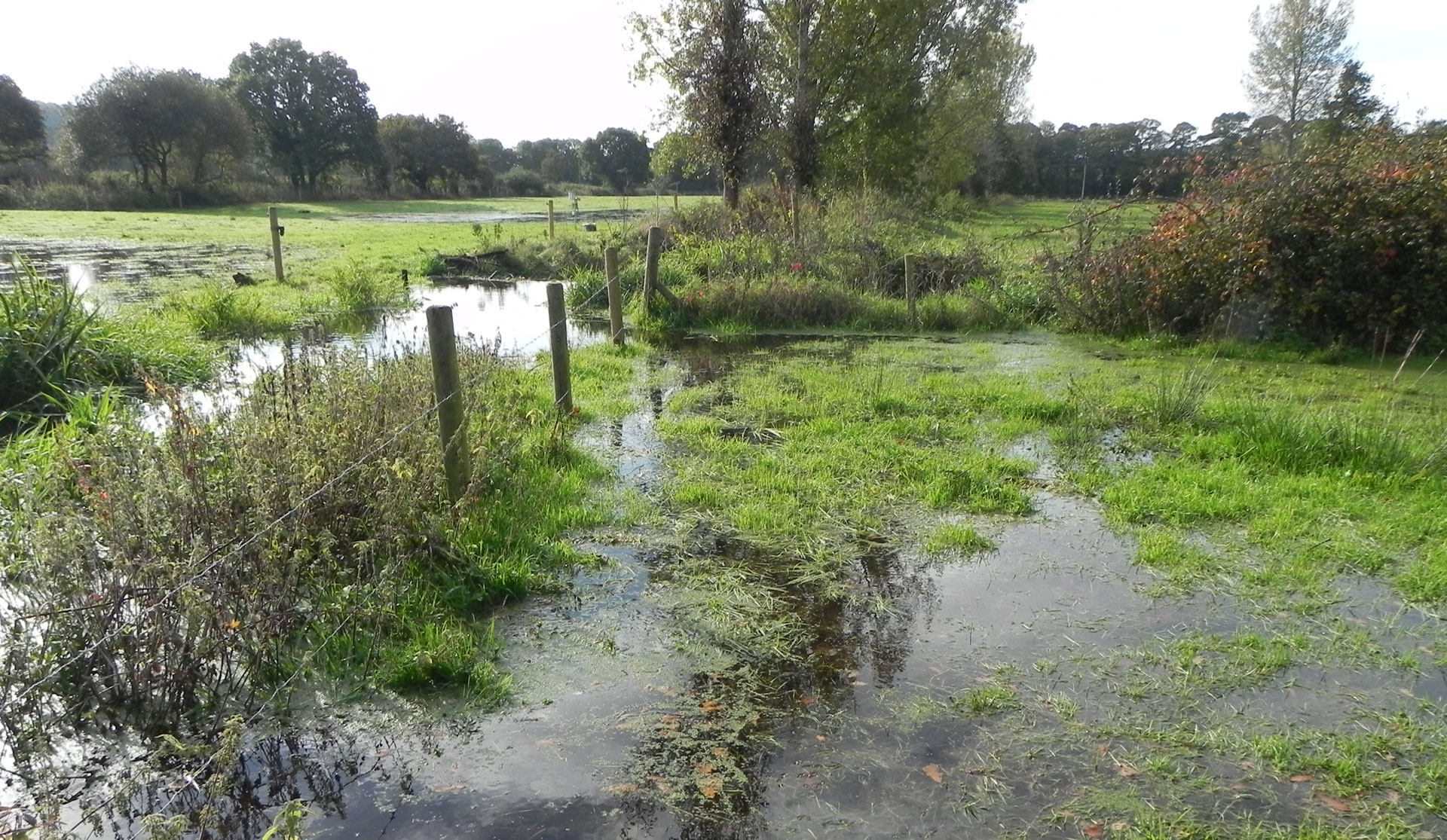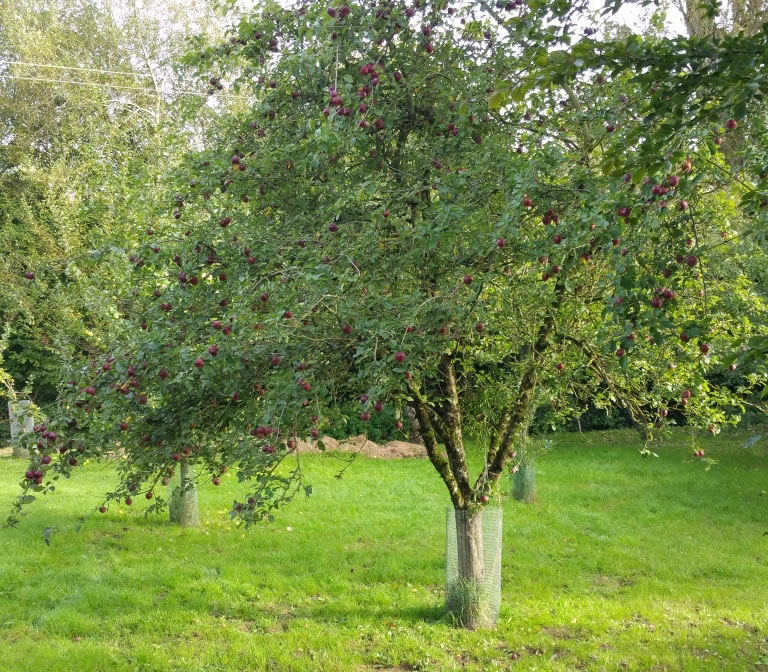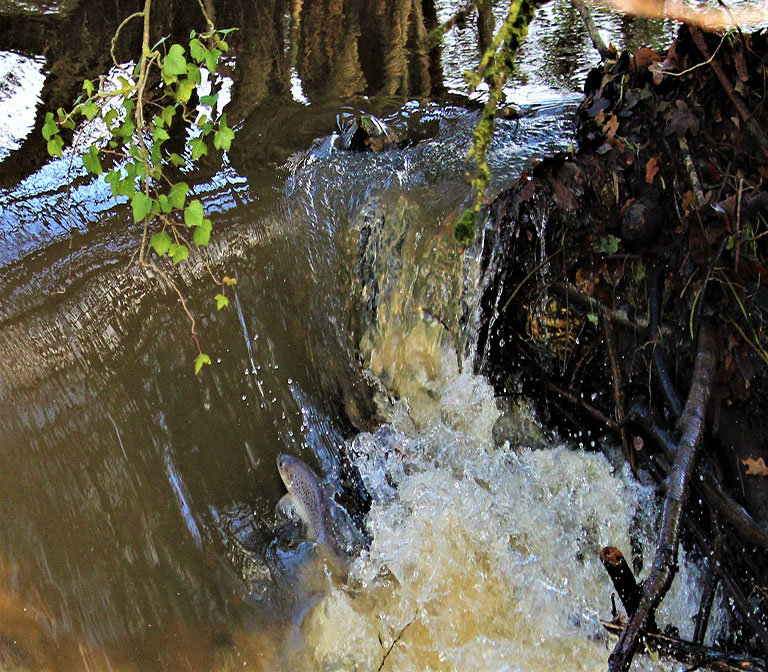
Female beaver feeding on willow in lower River Otter, © David White
The announcement on 6 August that Eurasian beavers could stay on Devon’s River Otter followed the successful completion of the 5-year River Otter beaver trial described in Land Journal and the publication of a report on the findings of scientific research carried out since 2015.
Wild beavers reintroduced after scientific trial
- The River Otter beaver population increased from 2 family groups in 2015 to occupy around 13 family groups or territories by March 2019. With only 3 mortalities reported and the population dispersing throughout the main stem of the river and some tributaries, the catchment is clearly capable of supporting a healthy, expanding beaver population.
- Public perception surveys carried out nationally found that of 2,741 people, 86% supported beaver reintroduction in 2017. This rose to 90% by 2019.
- Beavers do not build dams in larger rivers. Beaver dam capacity modelling showed which watercourses could support dams, and a snapshot survey from October 2019 found a total of 28 across 6 of the beaver territories. These allowed the modelling to be verified, and showed how the dams in larger, faster streams were much more dynamic structures as they reached the limit of their viability.
- A sequence of beaver dams constructed upstream of a village at risk of flooding has seen wetland created and a measurable reduction in peak flows as a result.
- The effects of the beavers’ dam building have also had significant ecological benefits, with increases in water vole populations as well as those of wildfowl such as teal and snipe, in the wetlands that beavers have created. One county wildlife site has seen an increase in its biodiversity because of changes in vegetation structure and enhanced water levels.
- There have been negative land drainage impacts on agricultural land at 5 sites, where water levels increased, with beaver feeding seen on riverside maize in 3 territories, and in some cases beavers built dams built specifically to access maize. Small riverside orchards have also experienced beaver feeding, both on windfall apples and the trees themselves. Mitigation techniques have been deployed successfully where problems were encountered, but the trial reports highlight the importance of rapid and pragmatic advice and support for affected landowners.
- The ecotourism benefits for some local businesses have been significant, although those who do benefit from beaver reintroduction may not always be the same people who bear the costs with local hospitality businesses being the major beneficiary, and some landowners managing the impacts.
- Detailed screening of the beavers by zoological specialists throughout the trial concluded that the animals presented no significant risk to the health of humans, livestock or other wildlife.

How beaver activity benefits fish
One of the most exciting findings of the trial has been the remarkable restoration of natural riverine processes, and the knock-on effects for ecology and particularly fish species.
Where beaver dams have been built in streams that have been dredged and straightened by engineers and farmers over the years, the effects have been remarkable. New meanders are created and natural stream riffles and pools are restored. Spawning areas have been created for trout and bullhead in the gravel beds, and lamprey, eels and the larger trout enjoy the deeper, siltier pools that temporarily form behind the beaver dams.
The importing of woody material by beavers is now a process even being replicated by organisations such as the Wild Trout Trust, which understands the importance of naturally functioning watercourses complete with fallen trees and pieces of wood in the channel.
Unfortunately some anglers still believe that beavers eat fish, or that beaver dams will impede the migration of salmon upstream, and organisations representing these views are lobbying for an end to the restoration of the animal to our landscapes.
“One of the most exciting findings of the trial has been the remarkable restoration of natural riverine processes”
Supporting farmers to unlock the benefits of wild beavers
Beavers are the ultimate water engineers and restore natural streams and wetlands, felling trees and blocking watercourses. However, the English landscape is largely artificial, and our watercourses have been heavily modified by humans over millennia. Beavers will therefore inevitably cause conflict with the existing land-uses and it is vital that proactive management and landowner support is integral to any reintroduction.
One of the simplest but most effective measures would be to provide more space for our watercourses. Moving infrastructure and farmland back and providing a buffer strip would have multiple benefits for our rivers and streams and the fish and other wildlife that live in them. It would also enable beavers to maximise the benefits they can provide by restoring wetland corridors, and reduce the conflict that they may otherwise cause.
“Proactive management and landowner support is integral to any reintroduction”


What happens next?
The decision that the beavers can remain on the River Otter, while very welcome, is only the first of many decisions that now need to be made about beavers in England. There are already wild populations cropping up in other rivers in England, such as the Tamar and Stour, and many organisations are keen to introduce them elsewhere.
How will these populations be viewed, safeguarded and managed? Will Natural England grant licences for new releases elsewhere? And will funding for their ongoing management be made available to support landowners wishing to give the beavers and their new wetlands enough space? These are all issues that may well be included in a government consultation likely to begin in November.
With the right policies in place, we should soon start to see this charismatic species cropping up in rivers throughout the country.
Related competencies include: Management of the natural environment and landscape
